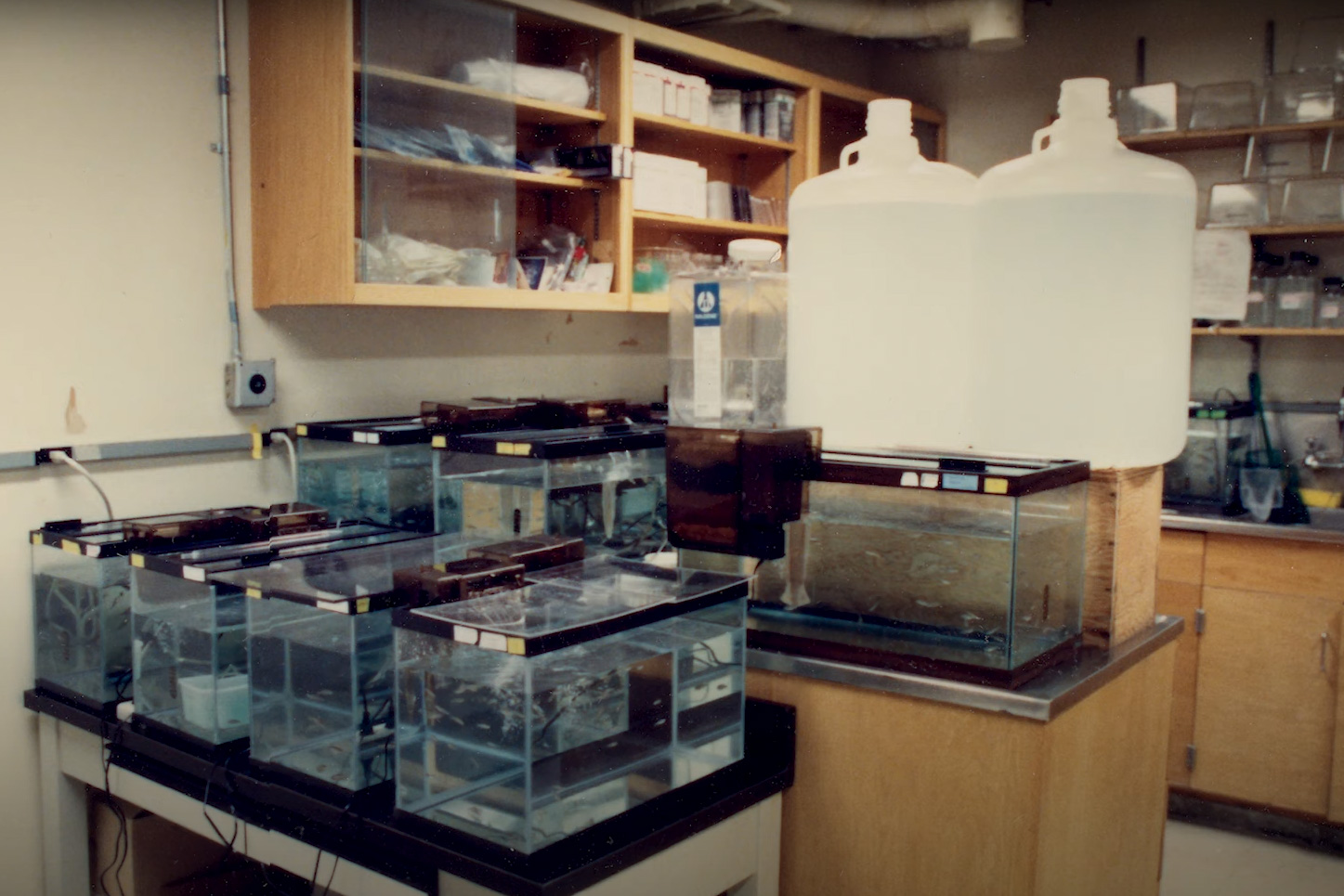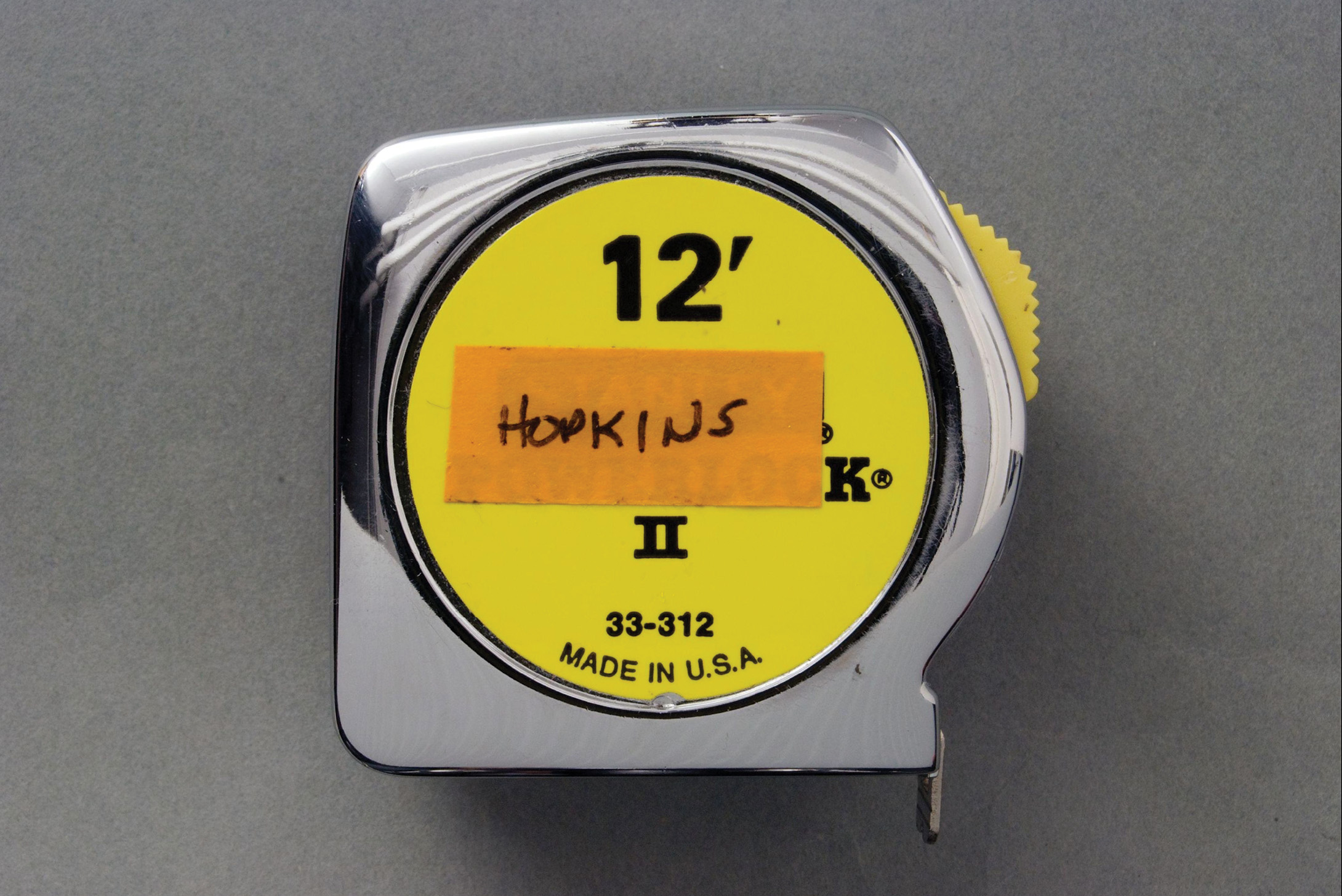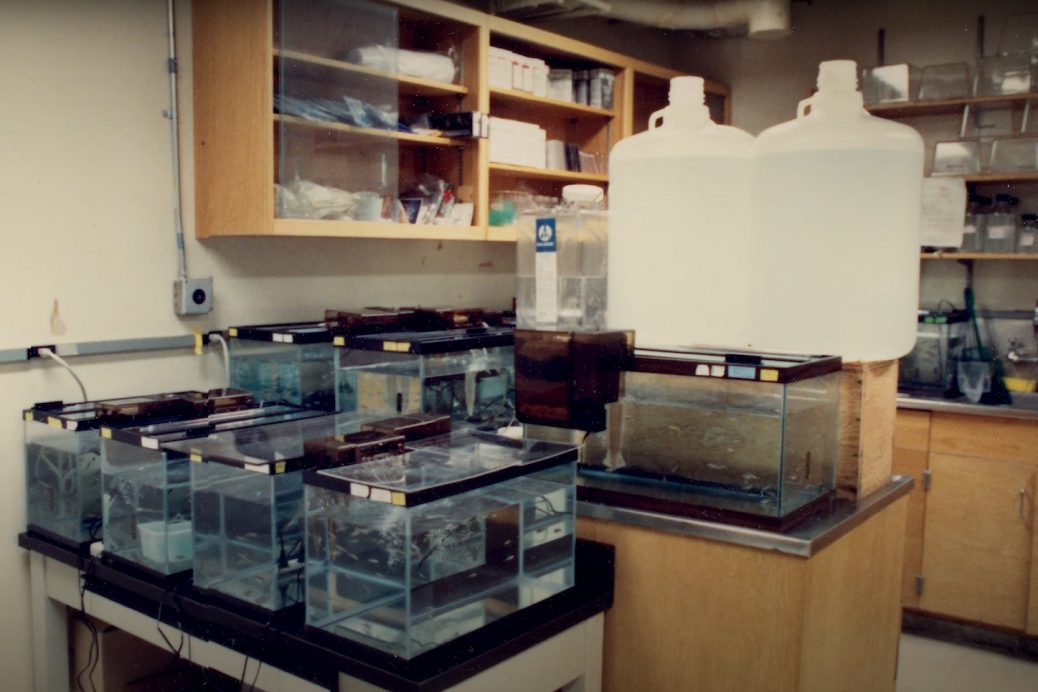Penny Chisholm picked up Nancy Hopkins in the cancer center an hour before their appointment with the dean on August 11, 1994. They walked across the street to collect Lisa Steiner and Mary-Lou Pardue in the biology department, then to the main campus to pick up JoAnne Stubbe and Sylvia Ceyer. The six MIT professors from the School of Science walked as a band across the shady expanse of Eastman Court, imagining that everyone must be watching them. It was ridiculous, Penny thought: here she was, a full professor, feeling as uncertain as a freshman on her first day of class.
They pulled open the heavy doors to Building 6 and began walking down the long, cool corridor. On a summer day, without the usual crush of students, they could hear their steps echo against the marble floors and the tall, painted cinder-block walls. No one said anything.
The dean’s assistant showed them into his conference room. Nancy had always been curious to see it; this was where the Science Council argued over tenure decisions. It was a stately room, with high ceilings and wood paneling. Nancy’s eyes went to the long polished-wood table that dominated the room. She thought of the opening scene of The Girls in the Balcony, which described when the newly formed Women’s Caucus of the New York Timesmet with the publisher and other men of the newspaper’s masthead across a 25-foot table, an obdurate, gleaming mahogany symbol of the 121-year-old institution the women were challenging. To the journalists in the book, it had seemed overpowering, “to go on as long as the eye could see.” This table was smaller, Nancy thought, but no less daunting.
Someone had set out soft drinks, coffee, and cookies on a credenza next to the table. Above it was a large photograph, and Nancy could see that the other women’s eyes had fixed on that. It was a picture of Robert Birgeneau, dean of the School of Science, and the school’s five department heads. They were all men, as department heads had always been, and all grinning. One was wearing a tuxedo. They were holding their forefingers aloft to say, “We’re number one!” Suddenly all Nancy could see of the room was the photograph. She felt sick. This had all been a bad idea. She remembered what Penny had said all summer: “We’re not even on their radar screen.”
The women had spent the past month meticulously preparing a proposal for the dean, asking him to form a committee to examine the data on space, salaries, resources, and teaching assignments to make sure that women were being treated fairly compared with men. The committee would meet with each woman on the faculty once a year to determine any problems, and then recommend ways the dean could solve them. Only 17 of the School of Science’s 214 tenured faculty were women. Sixteen of them had signed a letter—polite, conciliatory, collaborative in tone—accompanying the proposal to the dean.
“We believe that discrimination becomes less likely when women are viewed as powerful, rather than weak, as valued, rather than tolerated by the Institute. The heart of the problem is that equal talent and accomplishment are viewed as unequal when seen through the eyes of prejudice.”
“There is a widespread perception among women faculty that there is consistent, though largely unconscious, gender discrimination within the Institute,” they wrote. “We believe that unequal treatment of women who come to MIT makes it more difficult for them to succeed, causes them to be accorded less recognition when they do, and contributes so substantially to a poor quality of life that these women can actually become negative role models for younger women. We believe that discrimination becomes less likely when women are viewed as powerful, rather than weak, as valued, rather than tolerated by the Institute. The heart of the problem is that equal talent and accomplishment are viewed as unequal when seen through the eyes of prejudice. If the Institute more visibly demonstrates that it views women as valuable, a more realistic view of their ability and accomplishments by their administrators, colleagues, and staff will ultimately follow.”
They had worried over every detail, met in secret, and shredded early drafts, fearful of being found out as activists or, worse, radicals. They assumed the dean would have already alerted the Institute’s lawyers.
But Penny was right. When Bob Birgeneau walked into his conference room for his three o’clock that afternoon, he didn’t even know what the meeting was about. He hadn’t read the letter or the proposal the women had so carefully written, shredded, and rewritten over the previous month. He was just back from Brookhaven National Lab, on Long Island, where he spent the better part of every summer running experiments on neutron scattering in the High Flux Beam Reactor. He had spent his early career avoiding administrative jobs, and while he liked his role as dean, he preferred being in the lab, especially at Brookhaven, where he did his own research without postdocs or graduate students to manage. He had returned recharged, as he always did. To the six women who sat waiting for him, he showed a picture of confidence and ease, a late-summer tan, and a broad smile.

If he had to, Birgeneau would have guessed they were there to talk about a dispute he knew well: the previous spring, Nancy had come to see him about having been removed from teaching the introductory biology course she’d developed, despite having earned high ratings from students. Instead, Nancy explained how they had come together over the summer, said that they wanted to work with the university, and explained their idea for the women’s committee. She had typed out notes, knowing she’d have trouble keeping her nerves in check. In bold she’d typed: “Progress at universities comes when committed faculty meet up with a committed administration. Opportunity exists now at MIT to do something important about this very important problem.”
The women went around the conference table, starting with Sylvia, then JoAnne. They described the arc of their careers: how optimistic they’d felt coming to MIT, only to end up feeling isolated, ignored, frustrated over resources. Lisa talked about salaries, relating how some women realized they’d been underpaid only after they got sudden raises. The women had known when they chose careers in science that they would have to make sacrifices in their personal lives, but they had not expected to be paid less than their male colleagues. None of the women in the room had children, Nancy told him: “They aren’t even married.”
“My personal life doesn’t exist,” Sylvia said. “I can’t even buy a house.”
At this the dean jumped in—Nancy thought he might lunge across the table. “Why didn’t you come and see me about that?” Male faculty members had been getting loans to buy homes for years; none of the women in the room had realized they could ask. A whole world existed for men that the women were only now glimpsing.
Birgeneau had experienced a few eureka moments in his 30-year career, times when he was struggling to make sense of a set of facts that didn’t seem to fit together and then suddenly, like a thunderclap, everything moved into place to reveal a fundamental truth, a shift in the weather. He still vividly remembered the time in 1978 when he’d been working on a problem about the phases of smectic crystals—an unsolved question first raised by French physicists a century earlier. He was driving south along the Connecticut Turnpike when the answer struck him, with such force that he pulled off the highway to find a pay phone and call his collaborator: “I’ve got it!”
Listening to the women now, one after the other, Birgeneau felt the same sudden clarity, a feeling so strong he later described it as a religious experience.
As dean of science, it was his job to know all the faculty members and the challenges they faced, so the women and even some of their stories were not unfamiliar to him. Had any of them come to him individually, as Nancy had in the spring about the biology course, he would have explained their complaints as the idiosyncrasies of a department, a situation, a relationship, a budget dispute, or internal politics. Now he had six women in front of him, and a letter with 16 signatures. Seeing the women all together and hearing the uniform unhappiness in their stories, he suddenly realized, We’ve got a big problem. This wasn’t just about lab space or a course—it was a pattern. A problem in the system. These women were not difficult. He was struck by how much they’d managed to accomplish despite the environment they’d been working in. He hadn’t realized how few of them had children. Few men had made that personal sacrifice, he thought—he himself was the father of four.
Vest liked to seek a lot of opinions before he made decisions, which could sometimes vex his lieutenants. But in this case, he didn’t hesitate. He told Birgeneau to go ahead. If there were inequities, MIT needed to fix them.
Birgeneau asked the women if it was all right for him to speak now. He told them that when Nancy had come to him the previous year, he hadn’t known her, so he couldn’t evaluate what she was saying. He didn’t think it was discrimination, but he’d asked his daughters and his wife, a social worker, and they had started him thinking. And now he understood what they were saying, what Nancy had said: women were—here he borrowed the word Sylvia had used earlier in the meeting—“marginalized.”
Nancy asked if he thought their committee would work. Birgeneau was doubtful. What they were feeling was disrespect, and that was hard to quantify. He told the women he thought the issue might be tangled in the competitive, male-dominated culture of MIT, and no committee could fix that. But he told them they could try. He suggested they keep it small—three people—but agreed when they asked for four or five. He told them to meet with his assistant to draw up a charge outlining the committee’s role—that was standard practice for establishing any new committee, like setting a hypothesis. His assistant would be back from vacation in two weeks.
“Our meeting with the dean went extremely well,” Nancy wrote the other women. “In fact it’s hard to see how it could have gone better. He was receptive, concerned, and prepared.”
Her jubilation was short-lived. Two weeks later, Birgeneau appeared in the doorway of Nancy’s office in the cancer center. It was at the other end of campus from his own. He laughed awkwardly. “I’m lost.”
She invited him in.
“There is a snag.”
“I’m being fired?” Nancy was still exulting from the meeting, and half joking, though it occurred to her that maybe she shouldn’t be.
Birgeneau had told the Science Council—which included the department heads and the head of the cancer center—about the proposal for the women’s committee, and some department heads were annoyed. They thought there were too many committees already, which Birgeneau thought was a concern he could work around. They also didn’t like to be second-guessed. He was surprised at how vehemently they had resisted the idea.
“So what?” Nancy said.
“They’ll resign.”
“Good.”
Birgeneau laughed. “You’ve probably noticed that deans don’t have much power.” It was true: the power in the School of Science had always been with the department chairmen, because they controlled teaching assignments and resources such as space and internal grants. Birgeneau told Nancy he had chosen strong chairmen on purpose. “Weak ones are boring. I like strong people—that’s why I like you.” But he had to rule by consensus.
The chairmen had reacted the same way Birgeneau himself had when Nancy told him her problem was “discrimination.” There were so few women in each department that they couldn’t see any pattern. They could explain all the reasons this woman or that woman was unhappy; as far as they could see, her difficulties were tied up with individual circumstances that had nothing to do with her being a woman. And MIT was just like all other elite universities in having so few women on its science faculty. All but three of the top 10 math departments in the entire country had not a single woman. As for the biology department, Harvard was worse.
A couple of the chairmen wanted to sit in when the committee’s charge was drawn up. Birgeneau told Nancy he would let them; it would help get them on board.
Nancy asked if the women should go to the president instead—maybe with Birgeneau. Birgeneau said no. “In universities things don’t work from the top down. Your movement is working because it’s grassroots. You have to get the chairs on your side.”
“Will it work?”
“I think so.”
“Can you promise?”
“Promise?” Birgeneau laughed again.
Birgeneau had already gone to see President Vest. Chuck, as he was known, was a tall and rangy West Virginian, soft-spoken and self-effacing. His father had been a celebrated professor at West Virginia University in Morgantown, and his own classmates recalled him as the smartest kid in every class, but his colleagues appreciated that he never needed to be the smartest man in the room. He was warm and unpretentious and still thought of himself as a small-town boy with small-town values. He’d arrived as president four years earlier from the University of Michigan, where he’d been ever since finishing college in his hometown, and risen rapidly from professor through a succession of high-ranking posts. He had met with a cool reception at MIT; the faculty preferred presidents who had risen through its own ranks, and Vest had the additional stigma of being the second choice, having taken the job after Phil Sharp declined it. Vest confronted any skepticism head-on, joking that he’d gotten two letters from MIT in his life: one rejecting his application for assistant professor, the other hiring him to be president. His kidding aside, many faculty members sniped that MIT had hired a president who couldn’t get tenure there.

experience of female scientists at MIT and beyond.
Vest had proven himself a prolific money raiser among private donors and in Washington, where he saw it as his responsibility to explain the importance of research universities for American innovation in the post–Cold War era. He had opened MIT’s first office in the nation’s capital. And he had recently succeeded in fending off the federal government’s attempt to force universities to give more financial aid based on merit rather than need, a fight the Ivies had declined to take on.
Standing up for needy students had made Chuck a hero to many faculty members, including Birgeneau, who had been among the early doubters. He had begun seeking Chuck’s advice often. Now, Birgeneau told Vest that he thought the women had a good idea to look into salaries and other resources, but the department heads were pushing back.
Vest liked to seek a lot of opinions before he made decisions, which could sometimes vex his lieutenants. But in this case, he didn’t hesitate. He told Birgeneau to go ahead, saying that he’d back him against the department heads if it came to that. If there were inequities, MIT needed to fix them. Birgeneau quoted Vest’s exact words to Leigh Royden, one of the three women in Earth, Atmospheric, and Planetary Sciences. Leigh relayed the words to Nancy, who wrote them on a sticky note that she attached to her computer monitor: “The president said, ‘Do it.’”
Adapted from The Exceptions: Nancy Hopkins, MIT, and the Fight for Women in Science, by Kate Zernike, and reprinted with permission from Scribner. Copyright 2023.






Recent Comments